7th May 2025
webinar
Driving Decarbonisation: Advanced Fuel Substitution Technologies - presentation by Kiranmai Sanagavarapu
This webinar is part of the Cemtech Live Webinar series, recorded 7 May 2025.
We face a dual challenge globally. About 75% of the infrastructure needed by 2050 remains unbuilt—wind turbines, climate adaptation projects, and urban development—yet cement production already contributes roughly 7% of global CO₂ emissions. This positions our industry not just as part of the problem, but as an essential part of the solution.
Most cement plants continue operating with limited alternative fuel adoption due to technical constraints, fuel quality concerns, and operational stability risks. Traditional efficiency improvements, while valuable, cannot bridge the performance gap required for meaningful decarbonization. The result is an industry caught between regulatory pressure for measurable progress and legitimate concerns about unproven retrofit solutions.
Proven Technologies Already Deliver High Fuel Substitution
The good news? Solutions exist that work in real commercial operations today. Drawing from installations across India, Europe, and the USA, three approaches convert even coarse, low-grade wastes into reliable kiln energy while addressing the specific constraints that keep most plants from meaningful fuel substitution.
Calciner technologies handle fuel consistency challenges where plants struggle with irregular waste materials. Reactor solutions work for facilities needing maximum flexibility with whatever fuel sources they can secure locally. Compact retrofit options fit plants where space limits major modifications.
Success depends on matching solutions to each plant's unique situation—what we call their "circles of influence." Internal capabilities, regional fuel markets, and regulatory frameworks all determine which approach works best. There is no silver bullet in decarbonization. It's about combining the right technologies for your specific context and starting the transition today.
Featuring:
Kiranmai Sanagavarapu, Program Manager for Clinker Decarbonization at FLSmidth Cement, whose experience across multiple continents delivers cross-regional insights into how operational and regulatory factors influence cement decarbonization strategies.
Key insights include:
- Why each plant's "circles of influence"—internal culture, local fuel markets, and global policy trends—determine which decarbonization lever works best for their situation
- How proven calciner and reactor technologies achieve 80-100% fossil fuel replacement while turning landfill waste into viable energy streams for cement production
- Real plant data showing NOx cuts from 474 to 358 mg/Nm³ with complete elimination of ammonia usage and coal reduced to 1.6 tons per hour
- How integrated automation from fuel dosing through gas analysis maintains clinker quality and production rates during high alternative fuel operation
- Why starting now with available technologies, learning from results, and building incrementally outperforms wait-and-see strategies
Discover how every cement plant, regardless of size or location, can take meaningful decarbonization steps today through proven alternative fuel technologies. Watch the full presentation now.
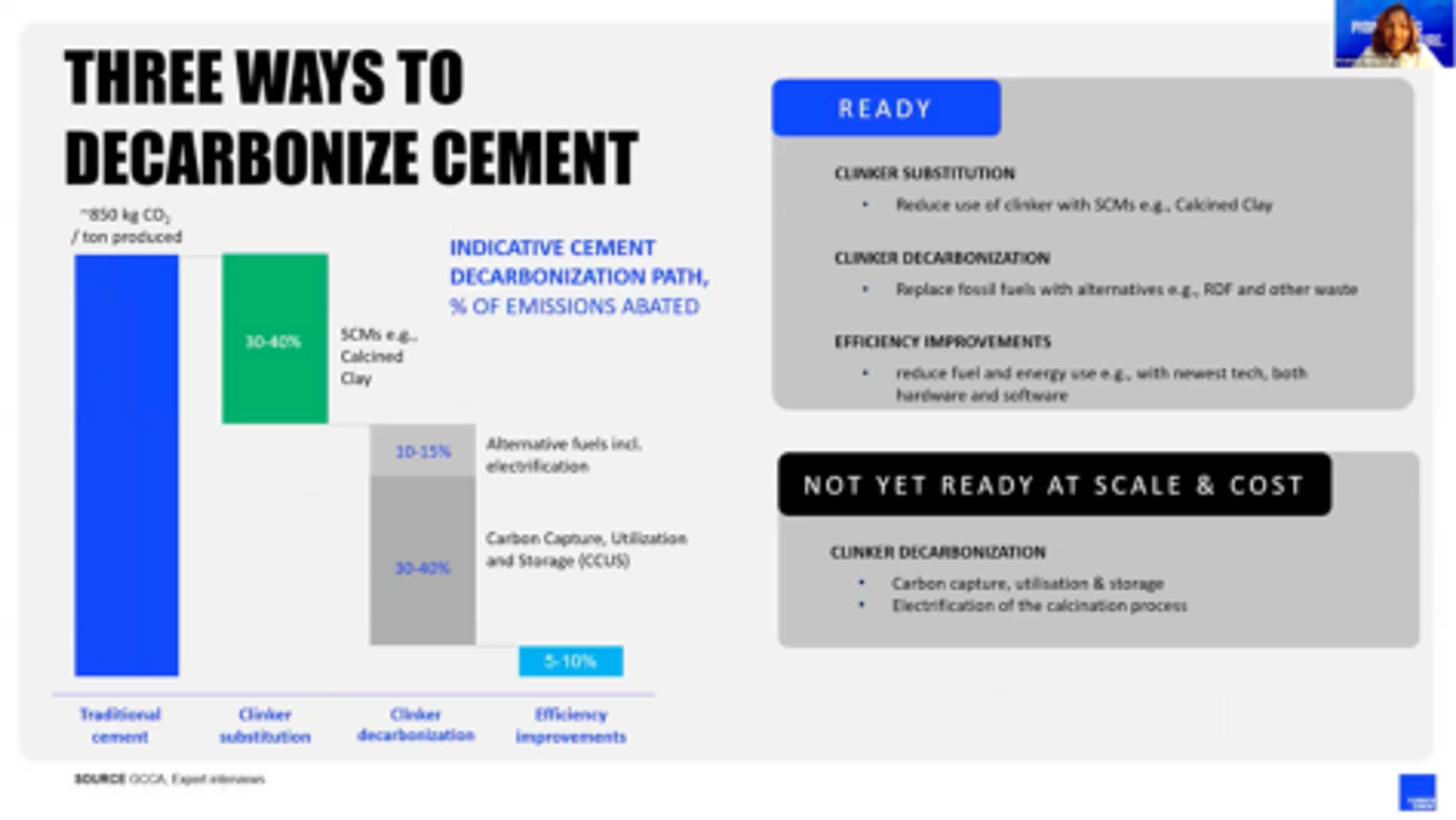
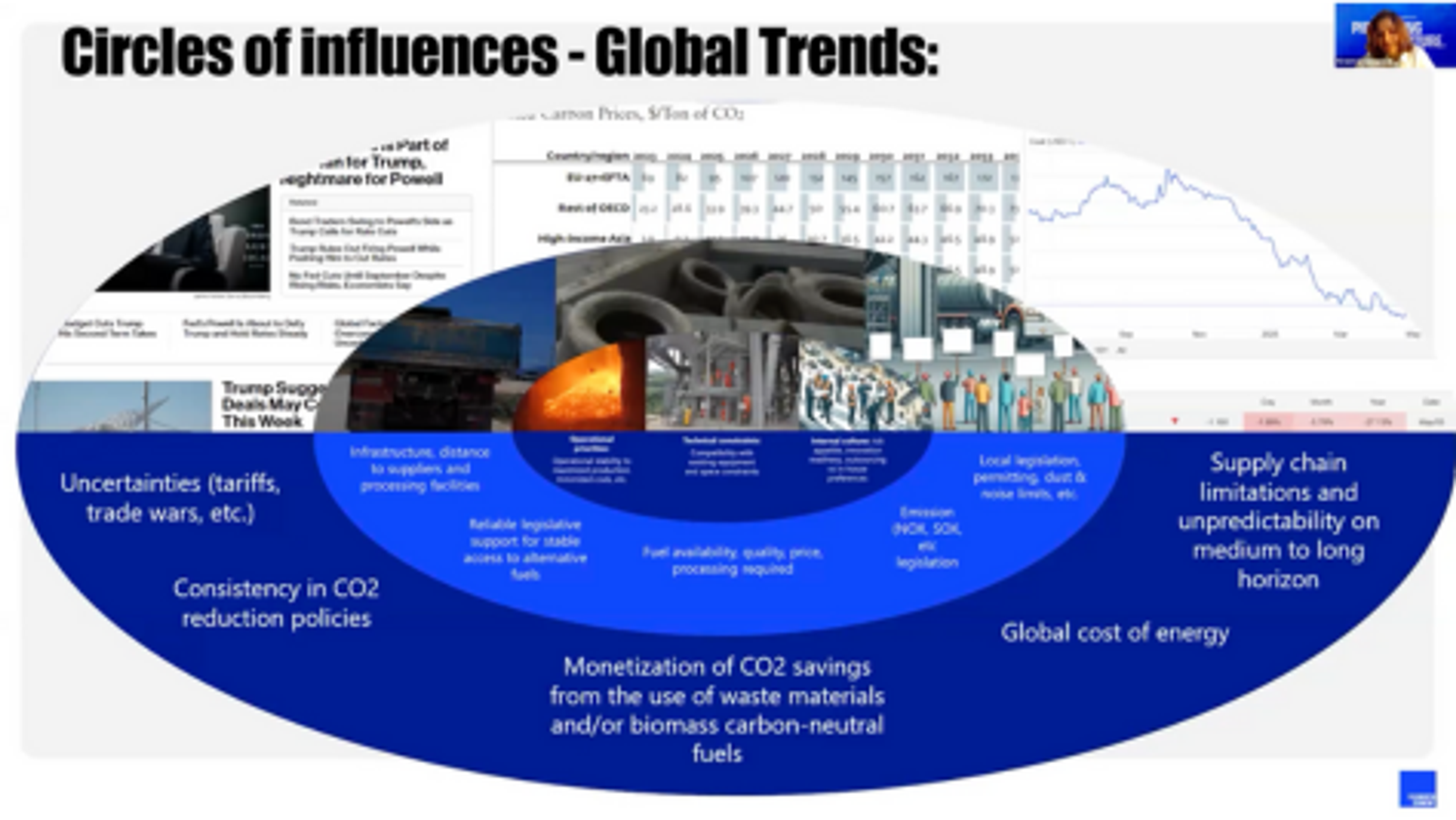
Kiranmai Sanagavarapu - Program Manager for Clinker Decarbonization
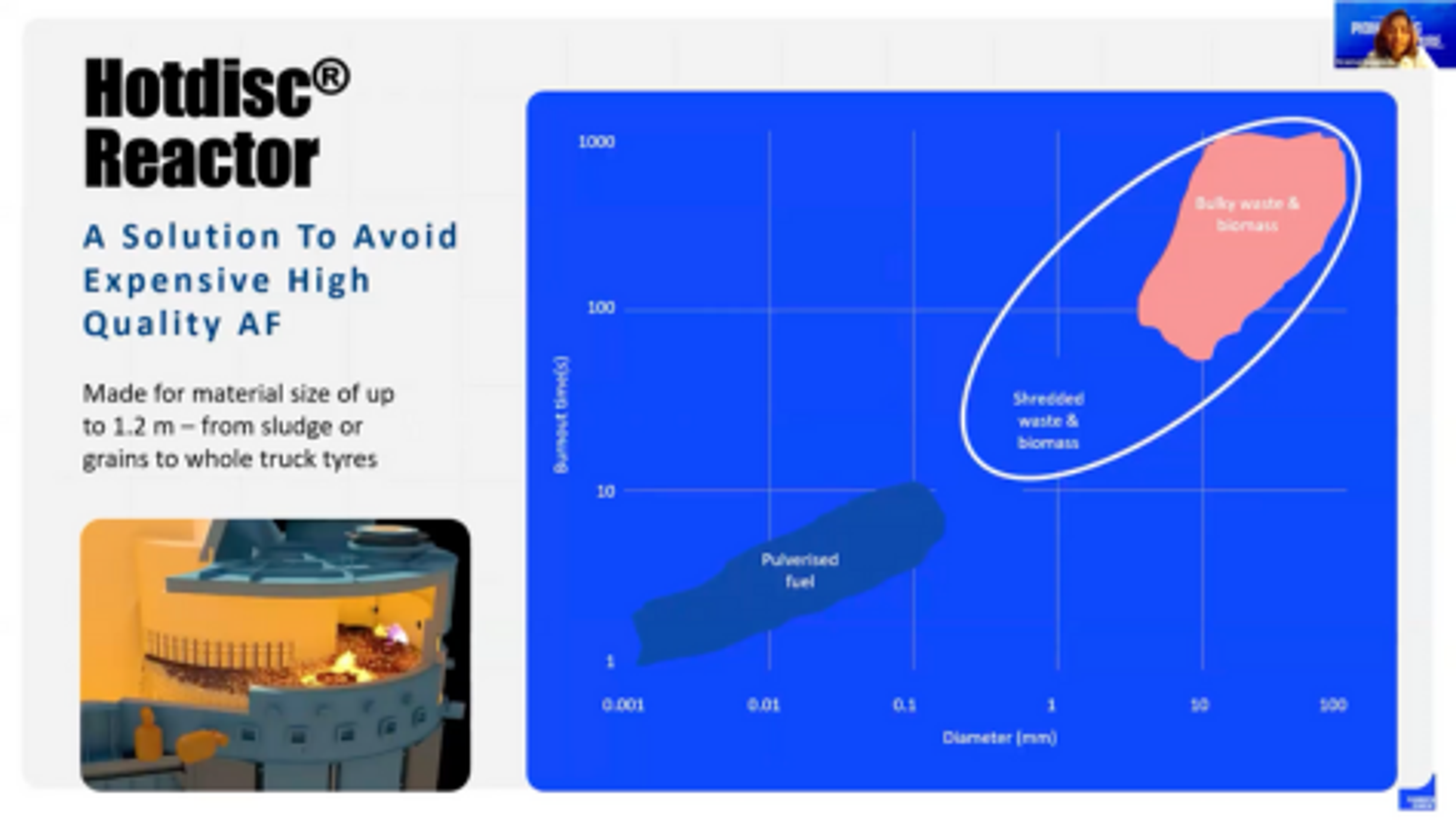
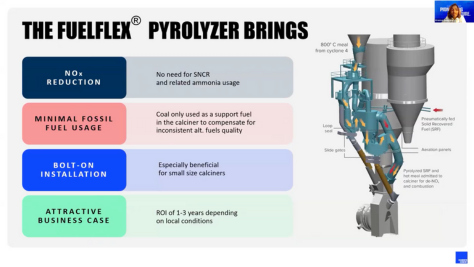.png?w=3840&q=80&auto=format)
Driving Decarbonisation: Advanced Fuel Substitution Technologies
Understanding Your Circles of Influence Drives Decarbonization Success
- Plant-level factors like operational culture and technical constraints vary dramatically between facilities
- Local fuel availability, processing infrastructure, and permitting requirements determine implementation speed
- Global energy prices and policy consistency influence long-term investment decisions
- Focus on the circle you can control first rather than waiting for universal solutions
Each plant faces a unique combination of influence circles, making contextual approaches more effective than universal solutions. Choose your circle of influence and start working from there.
ILC Low NOx Calciner Delivers Maximum Fuel Flexibility with Minimal Investment
- Achieves 80-100% alternative fuel substitution including 2D materials up to 100x100mm and tire chips up to 50mm
- High-oxygen bottom zone provides 20-60 seconds combustion time for complete burnout of large particles
- Long gas residence times and low velocities allow particles to recirculate for thorough combustion
- Minimal fuel preparation requirements significantly reduce processing costs
The ILC calciner represents the first and easiest choice for alternative fuel combustion. Fuel preparation affects combustion behavior dramatically—smaller, more uniform particles burn faster and more completely.
HOTDISC® Reactor Transforms Landfill Material into Viable Energy Streams
- Processes alternative fuels up to 1.2 meters in size, from municipal sludge to whole truck tires
- Handles extremely low-grade materials with heating values as low as 1200 kcal/kg and moisture exceeding 50%
- Variable retention times of 3-45 minutes ensure complete burnout while preventing operational disturbances
- Three variants (standard, HMT, and S) accommodate different plant layouts without major structural changes
With over 20 years of documented performance achieving 50-90% calciner substitution, this technology turns what used to be landfill material into viable energy streams for cement production. The capability proves particularly valuable where waste processing infrastructure is limited.
FUELFLEX® Pyrolyzer Cuts NOx Emissions While Delivering Fast Payback
- Real plant data shows NOx reduction from 474 to 358 mg/Nm³ at 10% oxygen while eliminating ammonia water usage entirely
- Bolt-on design enables installation without costly calciner extensions, particularly beneficial for smaller facilities
- Transforms RDF and biomass into highly reactive gas streams through oxygen-free heating
- Returns investment within 1-3 years depending on local fuel costs and regulatory requirements
This pyrolysis technology provides an elegant solution for plants facing strict ammonia use regulations. The results demonstrate tangible environmental and operational impact backed by real performance numbers.
Integrated Automation Ensures Quality Performance at High Alternative Fuel Rates
- Process control systems like ECS/ProcessExpert® maintain kiln stability and product quality during fuel transitions
- Advanced dosing systems (Pfister® TRW-S/D, FEEDflex) provide precise fuel flow control for consistent operation
- Gas analysis systems (KilnLoq®, GASLoq®) enable continuous emission monitoring and combustion optimization
- Comprehensive service agreements support ongoing performance optimization and remote monitoring
Successful high-rate alternative fuel implementation requires robust automation to manage fuel variability without compromising clinker quality or production throughput. Technology integration proves as critical as individual equipment performance.
Start Immediately with Available Technologies Rather Than Waiting for Perfect Solutions
- No single solution exists—success requires combining appropriate technologies for each plant's specific context
- Available solutions can deliver immediate emission reductions while building operational experience
- Incremental implementation reduces risk while allowing plants to learn and adapt their approach
- Every cement plant can take meaningful steps today regardless of size or location constraints
The green transition in cement represents a continuous journey rather than a one-time event. Starting now with proven technologies enables learning and incremental building rather than waiting for comprehensive future solutions.



Start Your Decarbonization Journey Today: No Silver Bullet? No Problem.
Every cement plant operates within different circles of influence. Stop wondering if alternative fuel substitution works at scale - FLSmidth Cement's proven technologies deliver results across three continents, helping cement producers navigate the green cement challenge with tailored solutions addressing your plant's unique operational requirements.
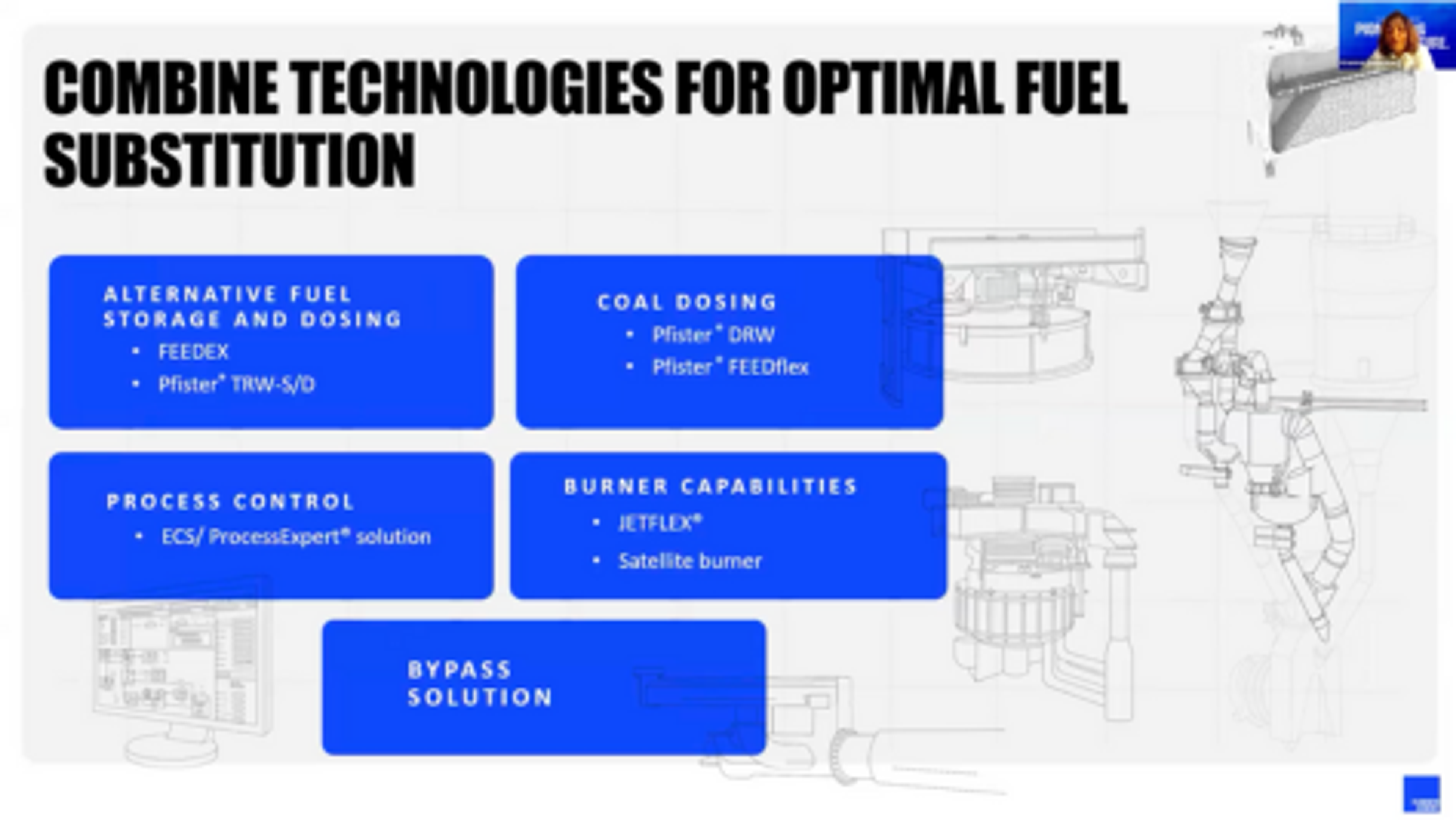
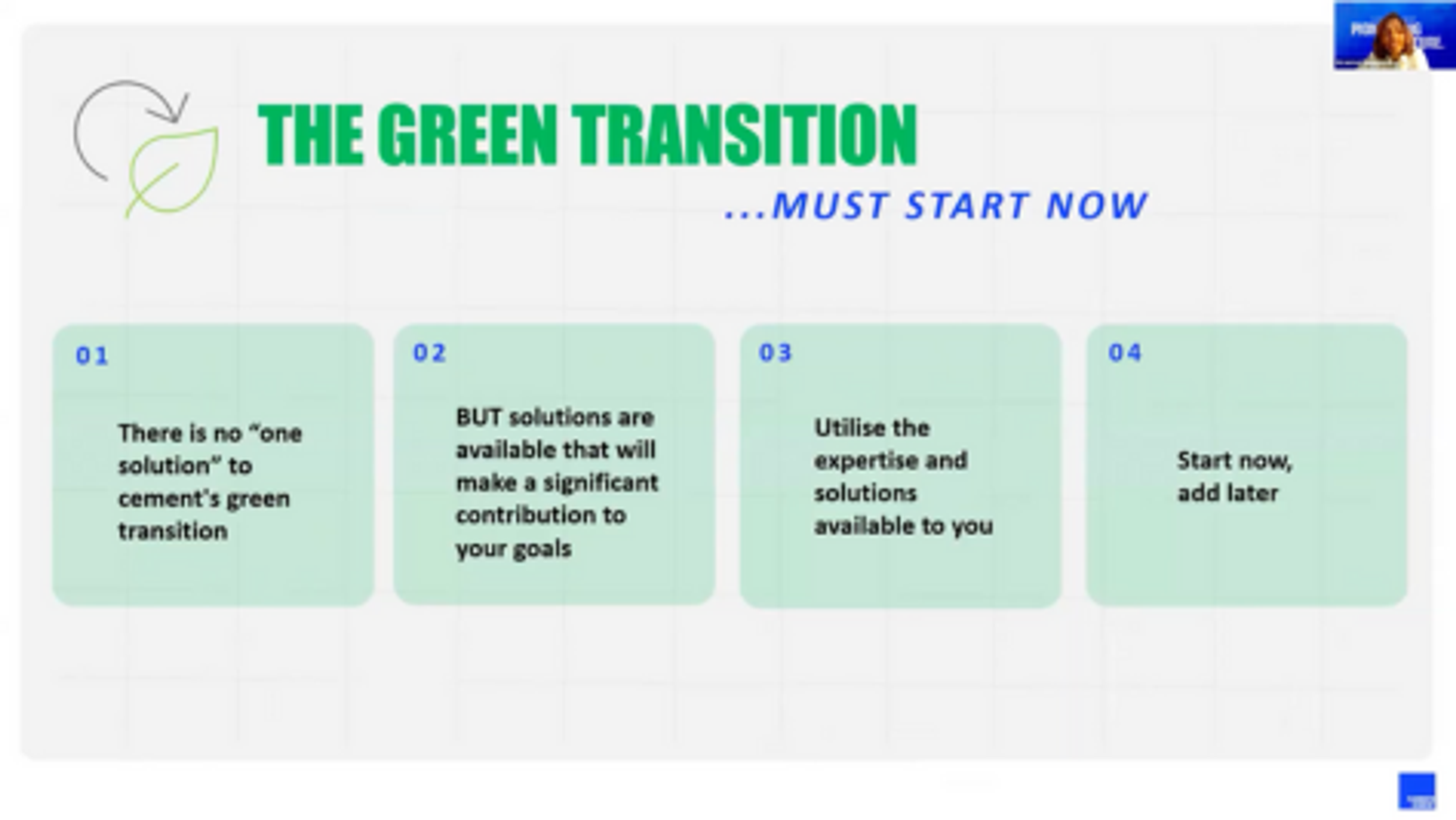
Ready to Start Your Decarbonization Journey With Proven Alternative Fuel Technologies?
The path forward is clear: match proven technology to your plant's specific constraints rather than waiting for perfect solutions. Whether you're dealing with fuel consistency issues, diverse waste streams, or space limitations, field-tested alternatives exist today.
Drawing from over 20 years of commercial installations worldwide, the plants succeeding with high fuel substitution share one approach—they started with available technology, learned from operational results, and built incrementally. As we see with customers across diverse locations globally, each installation teaches them more about their local fuel markets and what works within their specific regulatory frameworks.
The green transition in cement isn't a one-time event—it's a continuous journey. Your circles of influence are unique, but the opportunity is immediate. We're consistently turning landfill material into viable energy streams for cement production, and we're doing it every day in multiple installations globally.
The question isn't which technology is "best." It's which combination fits your operational reality and gets you moving toward meaningful emission reductions now.
Kiranmai Sanagavarapu - Program Manager for Clinker Decarbonization
Related Offerings
Products (9)
Expert Insights Q&A
Frequently Asked Questions: Driving Decarbonisation: Advanced Fuel Substitution Technologies









